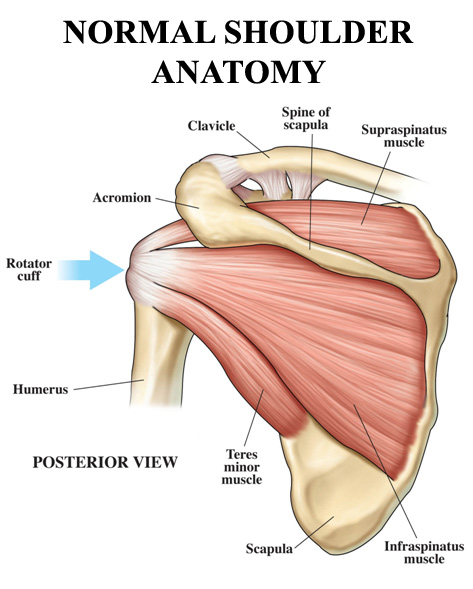Understanding Shoulder Instability
Posted on March 30th, 2017 by Andries Lodder
Understanding Shoulder Instability
In simple terms shoulder instability means that the shoulder joint is loose and that the shoulder can slide and move around in its socket. In severe cases this instability can lead to the shoulder moving completely out of the socket and dislocating. To completely understand shoulder instability, you need to know the basic anatomy behind the joint, what causes the instability and then how you can treat the problem.
Anatomy of the shoulder joint
The shoulder joint is made up of three bones; the humerus, the scapula and the clavicle. The main shoulder joint is where the head of the humerus meets the glenoid fossa of the scapula, this joint is known as the glenohumeral joint.
The four rotator cuff muscles connect the humerus to the scapula, the tendons of these four muscles; Supraspinatus, Infraspinatus, Teres Minor and Subscapularis, form the rotator cuff.
Surrounding the shoulder joint there is sac called the joint capsule, this sac holds fluids that lubricates the joint and allows for smooth movements to occur. The walls of this sac are lined by the ligaments of the joint.
The shoulder joint has the greatest range of motion of any of the joints within the body and so the joint capsule has a fair amount of slack in it, as it must allow for unrestricted movement throughout the joints range of motion.
Stability at the shoulder joint is predominantly provided by the tendons of the rotator cuff muscles, the joint capsule and the ligaments.
Causes of shoulder instability
In majority and most extreme cases of shoulder instability, the instability follows an injury or dislocation to the shoulder joint.
Shoulder instability can also occur without a previous injury usually in individuals who perform repeated shoulder movements that result in the stretching of the joint capsule and surrounding ligaments. This is especially common in swimmers, cricket players and basketball players. If this stretching of the capsule occurs and the muscles surrounding the joint do not have adequate strength, it allows the joint to slide around in the socket and this will eventually lead to pain and further instability.
Instability can also be cause due to laxity in the ligaments. This laxity can be caused by a genetic problem or disease. In cases such as this all the ligaments in the body are loose and usually all the joints in the body are unstable.
Symptoms of shoulder instability
Shoulder instability comes with a sensation of looseness in the shoulder joint and at times it may feel as if the shoulder has moved slightly out of place. Secondary to the instability; pain, inflammation and tendinitis may develop in the affected shoulder. The most evident symptom of instability is a dislocation and in the most extreme cases the dislocation can even occur when the individual is asleep.
Treatment for shoulder instability
In cases where no dislocation has occurred shoulder instability is best treated with physical therapy and exercise. A Biokineticist will prescribe exercises that focus on strengthening the muscles surrounding the joint and the capsule, mainly the four rotator cuff muscles. This will help provide more stability to the joint. If the individual is experiencing pain and inflammation, then a physiotherapist can help using massage, ultrasound therapy and electrical stimulation to help reduce these symptoms.
Following a dislocation, the shoulder joint needs to be reduced and put back into place. This should only be done by a trained medical professional, as there are many nerves and blood vessels in the area that could be impinged or irritated if the shoulder is reduced incorrectly. Following a single dislocation surgery shouldn’t be necessary. However, after two or more surgery may be necessary as the ligaments and capsule may be excessively stretched. After the shoulder is reduce or surgery is performed, then the individual will require rehabilitation through physiotherapy and once there is minimal pain and swelling and adequate range of motion the individual will require exercises from a Biokineticist.
By Jennifer Steele
Tweet

